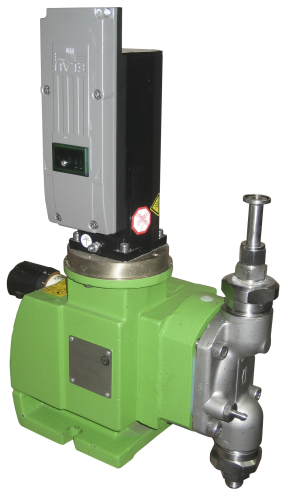
“Digital motors are the way forward as we see it as they have the potential to replace the technology currently used for pumps that are under process control,” claimed Steve Digby, SPX UK sales manager. “The advantage of these motors is that they deliver constant, exact control of the pump speed and allow the user to exercise control to fractions of a revolution. With the digital motor, it becomes possible to dose highly accurate single shots of liquid at a time.”
SPX metering pumps are generally driven by an induction motor, enabling them to deliver an accurate and continuous flow rate. However, there are many applications which do not require a continuous flowrate, so it is necessary to keep starting and stopping the motor. This can lead to overheating, and it can be very difficult to start and stop the motor accurately in order to precisely time its operation with other equipment.
Digital motors are designed to cope with frequent starts and stops. They also provide relatively high torque in a compact size and can be run very slowly for extended periods, whilst the inclusion of a position endcoder enables their speed and position to be accurately relayed to the control system. They are able to drive to exact set positions and their speed and direction can also be changed more quickly and precisely.
“The flexibility of this type of drive has other implications for our metering pumps,” continues Steve Digby. “The metering pump operates like a piston, firstly drawing liquid into the cylinder through the inlet valve and then forcing it out through the discharge valve. This means that with standard motors the pump only delivers product 50% of the time. With the digital motor, this can be changed to enable the suction stroke and the pumping stroke to be speeded up. Where viscous liquids give problems with net positive suction head (NPSH), it is possible to overcome this by slowing down the suction stroke speed and either run the discharge stroke at normal speed or possibly increase the discharge speed.”
When operated with appropriate controllers, the digital drive can also be set to co-ordinate with other servo-motors, so they operate at the same time or relative to another drive. When used in filling machine applications, where speed and accuracy is all-important, multiple drives can be employed ensuring that the container is firstly positioned and then filled before exchanging containers.






